Stogie Spirits: Woodford Reserve Distiller’s Select
22 Apr 2010
I don’t consider myself a big horse racing fan, but who can resist the pageantry and excitement of the Run for the Roses? Besides, if nothing else, the Kentucky Derby always provides a great opportunity to smoke a cigar and sip some bourbon.
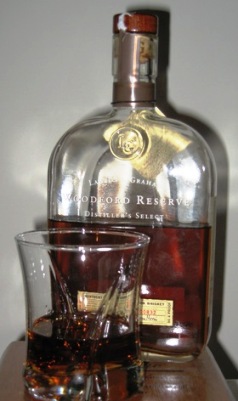 So with “The Fastest Two Minutes in Sports†coming up on May 1, now is an appropriate time to examine the official bourbon of the Derby: Woodford Reserve Distiller’s Select. This widely available product, according to its website, is recognized as “one of the finest, most complex small batch bourbons on the market today.â€
So with “The Fastest Two Minutes in Sports†coming up on May 1, now is an appropriate time to examine the official bourbon of the Derby: Woodford Reserve Distiller’s Select. This widely available product, according to its website, is recognized as “one of the finest, most complex small batch bourbons on the market today.â€
Distiller’s Select is made at the Woodford Reserve Distillery, a National Historic Landmark that dates back to 1812 when it was called the Labrot & Graham Distillery. The operation is credited with improving such vital bourbon processes as sour-mash fermentation, pot still distillation, and barrel maturation in the mid-1800s. Today, the refurbished distillery in Versailles, Kentucky, is surrounded by fields of bluegrass and scenic thoroughbred farms.
The current incarnation of Woodford Reserve was introduced in 1996 as a super-premium spirit. Its grain recipe is composed of 72% corn, 10% malted barley, and 18% rye. “That 18% figure for the rye is pretty high for a bourbon, and that’s an investment in the flavor of Woodford Reserve,†says Chris Morris, Woodford’s master distiller. “Rye is an expensive grain, but it allows Woodford to have a spicy, feisty character.â€
Another unique aspect of Woodford Reserve is that every batch contains less sour than any other bourbon to enable the mash to remain crisp. Then, following a five-day fermentation process, Distiller’s Select is distilled and matured in new, charred, white oak barrels.
The care and craftsmanship that goes into making Woodford Reserve (about $30 per 750 ml. bottle) is evident before the first sip. Right from the nose, as you appreciate the bourbon’s copper color and legs, you get a bold aroma of dry wood, charcoal, and cherry. This is a fitting introduction for the flavor that’s to follow.
The taste, bold and powerful yet approachable for bourbon fans, features an interesting interplay between butterscotch, peppercorn, and vanilla. The pepper seems to win out, especially during the bourbon’s long and spicy finish.
That means Distiller’s Select, when sipped neat, has no trouble standing up to full-bodied cigars. Of those I’ve been smoking lately, the LFD Air Bender, Oliva Serie V Maduro, and the Illusione 2 have proven to be the best complements. But the pairing possibilities are endless and you only have nine days to make your selection before the Derby—so get busy experimenting.
photo credit: Stogie Guys

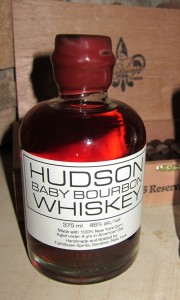
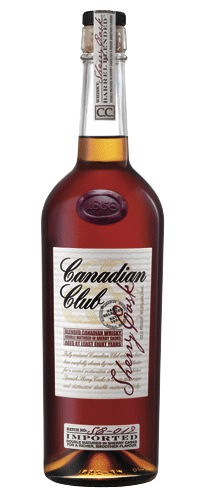 On the heals of other higher end releases like the
On the heals of other higher end releases like the 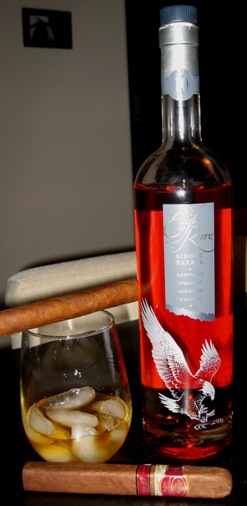 So, on my most recent trip to the liquor store, I decided to try my luck with another product of the Buffalo Trace distillery, which is located on the banks of the Kentucky River near Frankfort. My choices included Blanton’s, W.L. Weller, Old Charter, and Van Winkle—a lineup that has helped Buffalo Trace win more international awards since 1990 than any other North American operation, not to mention Whiskey Magazine’s “Distiller of the Year†award in 2005 and 2007.
So, on my most recent trip to the liquor store, I decided to try my luck with another product of the Buffalo Trace distillery, which is located on the banks of the Kentucky River near Frankfort. My choices included Blanton’s, W.L. Weller, Old Charter, and Van Winkle—a lineup that has helped Buffalo Trace win more international awards since 1990 than any other North American operation, not to mention Whiskey Magazine’s “Distiller of the Year†award in 2005 and 2007.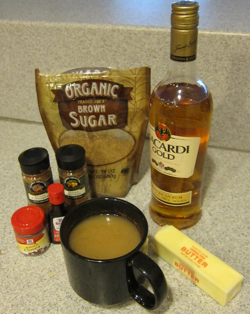 Well allow me to disagree. It’s mid-January, which means we’re right smack in the heart of winter. Now is the perfect time to try a cocktail with some heat beyond the proverbial warmth that a strong spirit of any temperature provides.
Well allow me to disagree. It’s mid-January, which means we’re right smack in the heart of winter. Now is the perfect time to try a cocktail with some heat beyond the proverbial warmth that a strong spirit of any temperature provides.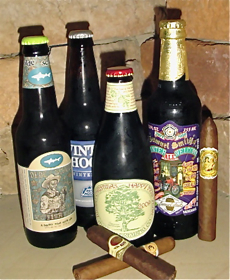 As the weather turns colder, a number of breweries release winter beers that have rich flavors that can stand up to the flavors of a fine smoke. Recently, I picked up a selection of such seasonal beers to see what cigars would pair well with each:
As the weather turns colder, a number of breweries release winter beers that have rich flavors that can stand up to the flavors of a fine smoke. Recently, I picked up a selection of such seasonal beers to see what cigars would pair well with each: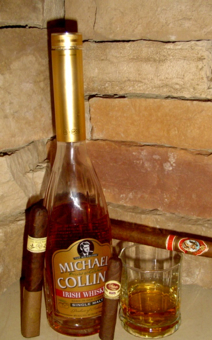
 Patrick Ashby
Co-Founder & Editor in Chief
Patrick Ashby
Co-Founder & Editor in Chief Patrick Semmens
Co-Founder & Publisher
Patrick Semmens
Co-Founder & Publisher George Edmonson
Tampa Bureau Chief
George Edmonson
Tampa Bureau Chief